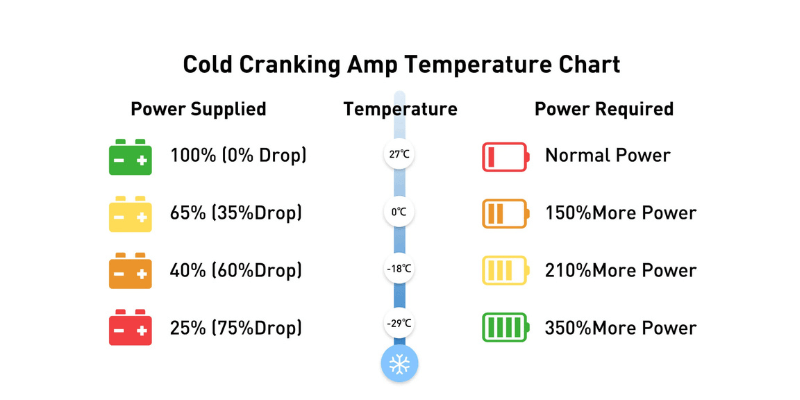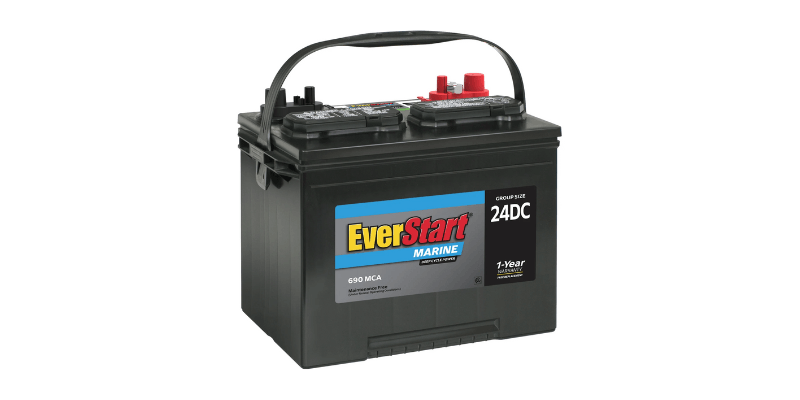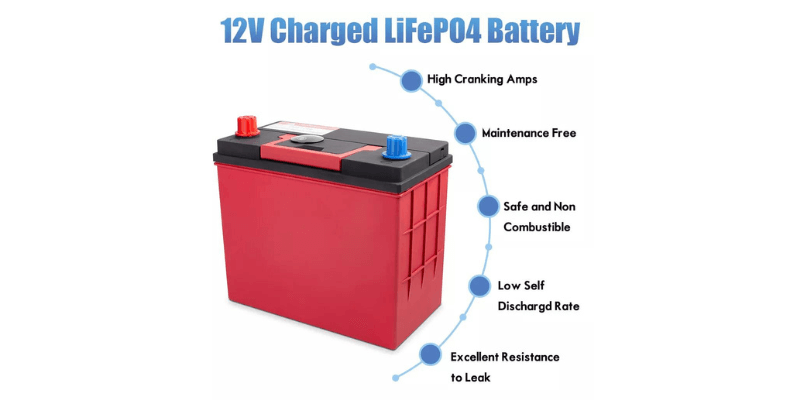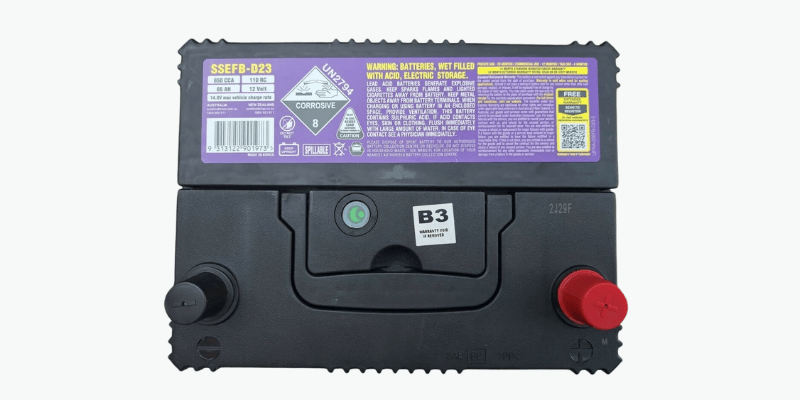Ngaba ukhe wadibana ne-Amp yegama elibandayo le-Amps (CCA) xa uvavanya iibhetri? Ukuqonda i-CCA kunye nokungafani kwayo kwi-Amps ye-Amps yaseMarine (MCA) kukunceda ukhethe ibhetri efanelekileyo, ukunciphisa iindleko. Apha ngezantsi, sicacisa i-CCA, amanqanaba afunekayo, umahluko ovela kwezinye iintlobo ze-Amp kunye nokubaluleka kwayo.
Zithini ii-amps ezibandayo?
I-Amps eBandayo ye-Ampcs ilinganisa ubuchule bebhetri ukuqala injini kubushushu obubandayo. Ibonisa ukuba zingaphi ii-Amplis ze-12 volts ibhetri ihlawuliswe ibhetri inokuthi ivelise imizuzwana engama-30 kwi-0 ° F (-18 ° C) ngelixa igcina ubuncinci i-7.2 Volts.
Olu lwazi lubalulekile kula matati aqala rhoqo kwiimeko ezibandayo, njengoko amaqondo obushushu asezantsi anciphisa ukusebenza kakuhle kwebhetri kunye namaxesha okuphendula.

Zingaphi ii-amps ezibandayo ezibandayo?
Isikhokelo esiqhelekileyo kukuba i-injini ifuna malunga ne-AMP enye kwi-intshi ye-cubic ye-cubic yokufuduswa – Uninzi lwezithuthi zifuna phakathi kwe-250 ne-600 ccas, ngelixa ibhasi enkulu okanye i-RVs inokufuna ukuya kwi-1 000 ccas.
Masibone inani elifanelekileyo le-CCA yebhetri nganye yemoto.
I-CCA yeemoto
Ibhetri enama-600 CCA iyacetyiswa, kodwa ibhetri ye-CCA ye-CCA isenokusebenza ngaphandle kwemiba ephambili.
I-CCA yeelori
Uninzi lweelori lufuna ibhetri engama-700 CCA, kodwa izithuthi ezincinci okanye izimvo zinokufuna kuphela i-400 CCA kuphela kwi-500 CCA.
I-CCA yekhefu
Oku kuxhomekeke kwizixhobo ezixhotyiswe yimoto yenqanawa. Kwiinqanawa ezingenazo ii-elektroniki eyongezelelweyo, i-500 cca yebhetri ye-CCA. Nangona kunjalo, ukuba kukho izixhobo ezongeziweyo, ibhetri ye-CCA ye-CCA eyi-1 000 ye-CCA inokufuneka.

Ngaba i-Amps eBandayo engaphezulu kwe-Amps iya kwenza injini?
Hayi
Nangona kunjalo, ukufaka ibhanki enkulu kakhulu ibhetri kunokuba yingozi. Ngaphandle kokukhuselwa-kwi-BMS, iibhetri ezikhokelayo ezingaphezulu kwe-Acid zinokubangela i-Arc eyingozi kunye neziqhushumbo ukuba zimfutshane.
I-MCA, i-CCA, kunye ne-HCA – Yintoni umahluko?
I-CCA ilinganisa ibhetri kwi-0 ° F, ngelixa i-MCA (i-MCA (i-MARD (i-Marine Cransing Amps) i-Amps kwi-32 ° F, indawo yokukhwaza kwamanzi. I-MCA ibalulekile kwiibhetri ezisetyenziswa kwimisebenzi enjengokuloba kunye nokuhamba ngenqanawa kuba uninzi lwe-boat lusebenze ngaphezulu.
Ngokubanzi, imilinganiselo ye-MCA iphakamileyo kune-CCA kuba iibhetri kuba iibhetri zivelisa okwangoku nge-32 ° f kune-0 ° F.
Ukongeza kwi-CCA kunye ne-MCA, kukho ne-HCA, okanye i-Amps eshushu ye-HEARK, ethi inyathelo kufuneka iqale i-injini yobushushu be-80 ° F. Oku kucaciswa kubalulekile ekuvavanyeni ukusebenza kwebhetri kwiimozulu ezishushu okanye ngeenyanga zasehlotyeni.

Ibaluleke kangakanani i-Amp ye-squyp ye-crank?
I-Ampling efch ye-crannking ibalulekile kwabo bakwimozulu eshushu, njengoko bechaphazela i-injini eqala ukusebenza kakuhle.
Kwimozulu ebandayo, iibhetri zisiba buthathaka kwaye zenze kakubi, ngoko kubalulekile ukukhetha ibhetri nge-CCA eyomeleleyo ukuphepha i-injini yakho.
Kwanakwiindawo ezifudumeleyo, qinisekisa ukuba ibhetri ihlangabezana neengcebiso zemoto yakho yemoto; Ngaphandle koko, umngcipheko webhetri ngaphambi kwexesha kunye nobunzima obuqala imoto yakho.

Ngaba iibhetri zeLithium zisebenzisa i-amps evuthayo ebandayo?
I-Amps ende-ekhulayo ibalulekile kwiibhetri ezisetyenziselwa ukuqalisa izithuthi, kodwa iibhetri zeLithium zisebenza ngenjongo eyahlukileyo. Ziyilelwe kumandla ahlala ixesha elide kwaye ihlawulwe ekuphumeni okuqhubekayo okwangoku kwangoku naliphi na iqondo lobushushu.
Uninzi lweebhetri ze-lithium azinawo ii-ratings ze-CCA kuba azikwenzelwe ukuqala kweenjini; Endaweni yoko, bagqwesa kwizicelo zokugcina amandla.
Kwibhetri yeHolo, esiyisebenzisayo iinkqubo zokulawulwa kwebhetri Ukunciphisa umda, ukhusela iinkqubo zombane kunye neebhetri. Iimveliso zethu zesiko zilungele ukugcinwa kwamandla egridi, isikhephe okanye iibhetri zendlu, kunye neenkqubo zendlu, kunye neenkqubo zekhaya, ngakumbi ngamandla omoya kunye nelanga.
Kuya kufuneka kukhankanywe ukuba ezinye iibhetri ze-lithium zisebenzela iinjongo ezimbini, zibonelela ngebhayisikile kunye nebhayisikile enzulu. Umzekelo, i-lithium yethu yesiko le-lithium yase-surine Carling i-Motors Motors kunye nee-elektroniki kwizithuthi zaselwandle ngelixa iqala nemoto.

